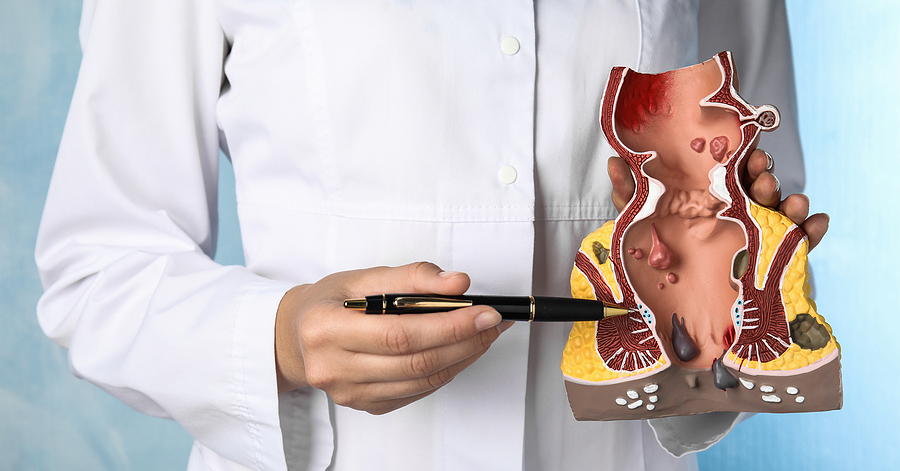Is Hemorrhoid Banding Painful? Here’s What You Should Know

If your doctor has suggested a hemorrhoid ligation procedure, there’s probably one key question on your mind: “Is hemorrhoid banding painful?”
Medical procedures and painful recoveries seem to go hand in hand, so it’s understandable that you’d ask that question. Fortunately, though, you might be pleasantly surprised by the answer this time.
Once you learn how hemorrhoid banding works, you’ll understand that hemorrhoid treatment doesn’t have to be a miserable experience. In fact, it might not be painful at all. Rubber band ligation could be exactly the solution you've been searching for.
Hemorrhoid Banding Procedure
During a banding procedure, the doctor uses a special instrument called a ligator to place a tiny rubber band around the base of the hemorrhoid.
First, the doctor inserts a scope and the ligator into the rectum. After getting the instruments into position, the next step is to gently draw the affected tissue away from the rectal wall. Then, the ligator’s trigger is released, and the small band slides around the hemorrhoid.
That’s all there is to it! The ligator is removed, and you can prepare to head home. All in all, this procedure takes only a few minutes from beginning to end.
You can learn more about hemorrhoid banding in this video featuring a colorectal specialist:
Is Hemorrhoid Banding Painful as It Happens?
As a general rule, it shouldn’t hurt to have a band placed around your hemorrhoid. That's because there aren’t many nerve endings in the area where internal hemorrhoids are. You’re more likely to feel sensations of pressure rather than pain.
For example, you’ll probably notice when the doctor inserts an anoscope into your rectum to begin the procedure. The next step, though, is taking hold of the hemorrhoidal tissue. Fortunately, an instrument like the Adler Ligator (AL 9000) accomplishes that with gentle suction that shouldn’t hurt at all.
Since there aren’t many sensitive nerves around the base of a hemorrhoid, placing the band shouldn’t be painful either. If you do feel any cramping or sharp pain, be sure to let the doctor know right away. A small adjustment of the band's placement will usually resolve the problem quickly.
After Hemorrhoid Ligation
Once the rubber band is placed, it will start restricting the blood flow to the enlarged hemorrhoid. Without this blood supply, the tissue will wither and shrivel. Eventually, it will separate from the body.
The dried-up hemorrhoid will pass out of your body — often into the toilet. You might not even notice when it happens. A bit of light bleeding might be the only sign, but even that’s not a sure thing.
Is Hemorrhoid Banding Painful During Recovery?
Compared to many other hemorrhoid treatments, such as excision surgeries, hemorrhoid ligation offers a much less painful recovery. Even still, you may need a few days to really feel like yourself again.
Some people do experience some rectal pain for a day or two after the procedure. More commonly, patients have a sense of fullness in the rectum. In either case, pain medication can help. Over-the-counter painkillers are usually sufficient.
Ice can help too. You may want to apply a cold pack to the area a few times a day. Protect your skin by wrapping the ice pack in a cloth and leaving it in place for no more than 20 minutes. You can reapply it once every hour or two.
Sitz baths may also feel good. Fill a tub with just a couple of inches of warm water so that you can soak the affected area. If you don’t have a bathtub, the doctor might send you home with a small sitz bath that rests on the toilet. Taking a few short sitz baths a day can be a nice addition to your recovery.
Your bathroom practices may influence how you feel during banding recovery. Make sure you’re drinking plenty of water and including fiber in your diet so that bowel movements will be easier to pass.
In the days after your procedure, set your feet on a short stool while using the toilet. Sitting in that position may allow you to pass a bowel movement with less straining.
When to Call the Doctor
Hemorrhoid banding recovery is usually a straightforward process. However, as with any procedure, there’s always a small chance of complications.
Extreme pain during recovery can be a sign of a serious problem. The same goes for heavy bleeding, fever or an inability to pass waste. If you experience such symptoms, seek medical care right away.
Additional Banding Procedures
You may have several hemorrhoids that need to be treated with bands. The doctor will probably recommend doing only one of them at a time.
Banding multiple hemorrhoids in the same session may increase the likelihood of complications. It can also make recovery more painful.
For your own comfort, choose to spread out your treatments. It’s often recommended to wait two weeks between banding sessions.
Choosing Ligation for Your Hemorrhoids
Is hemorrhoid banding painful? No, not especially!
Rubber band ligation is an effective method for resolving many internal hemorrhoids, and it can often be accomplished with minimal pain. It’s almost always less uncomfortable than traditional surgical hemorrhoidectomies. You may need only a few days of downtime and some over-the-counter pain relievers to recover from a hemorrhoid banding procedure.
If you’re ready for rubber band ligation, turn to a colorectal specialist who uses the Adler Ligator. This comfortable, affordable plastic ligator is designed for one-time-use hemorrhoid treatment. Consult our Find a Doctor map to begin your banding journey.
As with all medical issues, your physician is the ultimate source as to what procedure best fits your needs. Discuss all options and get a second opinion if you have any doubts. These articles are intended to be a source of general information only.
